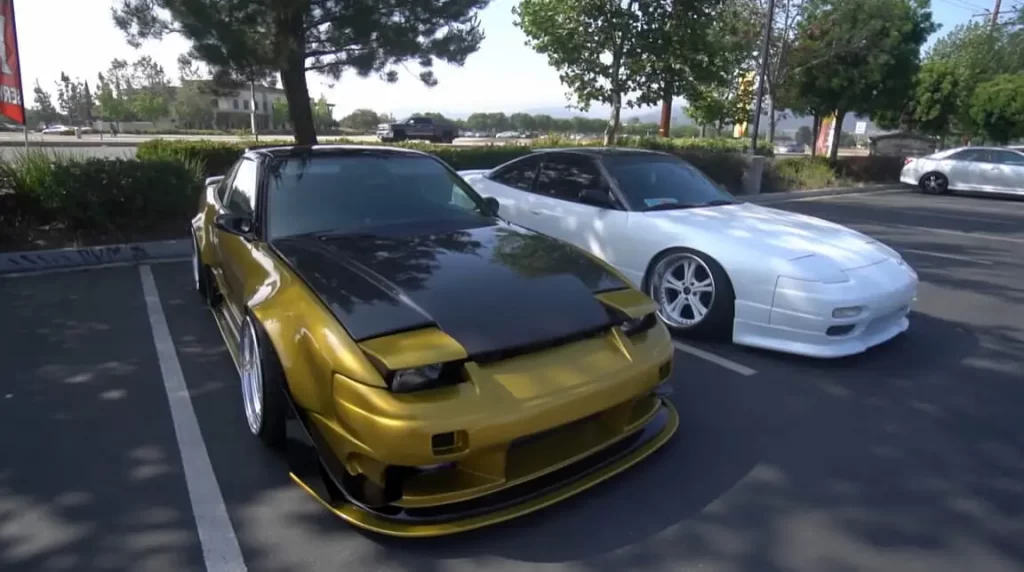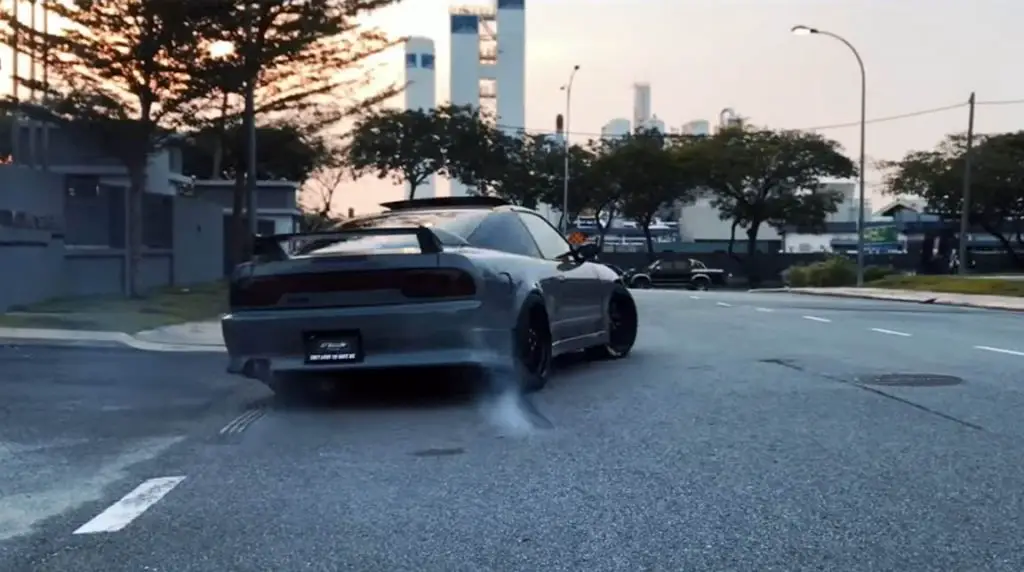The Silvia series, as well as the 180SX and 240SX, were all based on Nissan’s most successful S-Chassis. The Silvias were only known as such in Japan and, I believe, in Europe. There were three generations: the S13 from 1989 to 1994; the S14 from 1994 to 1998; and the S15 from 1999 to 2002.
From 1988 through 1993, the 180sx was manufactured on the same chassis as the S13. It did not, however, have the same 2.0 L engine as the S13; instead, it featured a 1.8 L engine (although the S13 could have a 1.8 L engine).
This article is all about the 180SX vs 240SX. So make sure to read until the end to find out what you’ve been looking for.
Then there’s the clincher. The 240sx was primarily a car that was only exported to the United States and was, at its core, a 180sx with a different engine, a 2.4 L engine. However, every Silvia imported to the United States is referred to as a 240sx.
Are the 180SX and 240SX the same?
No, they are not the same, but there are also some similarities between them. But overall, they are not the same when looking at the specs and the design.
When comparing the 180sx and 240sx, there is one distinguishing feature that stands out above the rest: The Nissan 180sx was made only for the Japanese market, whereas the Nissan 240sx was built for the American market. In this case, we cannot say which is better because the two models have different functions and specifications.

Which is better: 180SX or 240SX?
In this case, we cannot exactly say which one is good because the both models have different functions and specs from each other. But the following are some of the most important specs which will help you decide which one is better for you.
The design and the model of the vehicles.
One might easily argue that US drivers had the advantage in the early days of the 180sx and 240sx.
The 180sx, on the other hand, was a sportier variant of the Silvia, so the Silvia served as a coupe while the 180sx served as a fastback.
From 1992 to 1994, American drivers could also choose a 240sx convertible variant, which was not available to Japanese 180sx drivers.
Perhaps this extra option was added to compensate for the 240sx engine’s lackluster performance when compared to the 180sx, but that’s just speculation.
In Japan, the 180sx was available in two trim levels: “Type I” (Standard) and “Type II” (Advanced), both having a 5-speed manual or 4-speed automatic transmission. The Type II could potentially be equipped with the HICAS four-wheel steering system.
Engines.
The story of the 180sx and 240sx makes for fascinating reading. While the two cars had a lot in common in terms of design and were both constructed and sold as sports cars, the engines could have been built by two separate companies!
The CA18DET 1.8L engine (thus the name, see above) produced 170hp and 166lb-ft of torque when the 180sx was introduced. The 240sx began with the 2.4L KA24E engine
, which, while larger in displacement than its Japanese cousin, was not nearly as powerful.
It’s the story of many Japanese models, where the domestic and international specifications diverge dramatically in terms of power. The KA24E only produced 140 horsepower and 152 pound-feet of torque.
The valvetrain was another distinction between the two engines. The 180SX had a DOHC engine, but the 240SX only had a SOHC engine.
The Nissan 240SX S13/ Silvia S13/ 180SX has a long and illustrious history.
The Nissan S13 was released in Japan in the middle of 1988 as a 1989 model year vehicle. It was a tremendous hit with Japanese buyers at the time, and it won the Car of the Year Japan Award in its first year.
The hatchback 180SX with pop-up headlights and the S13 Silvia Coupe with normal headlights are two aesthetically distinct but technically equivalent cars.
In Japan, Nissan sold and marketed the two models separately through distinct dealerships.
The 180SX was offered in Nissan Bluebird stores alongside the Fairlady ZX, whereas the Silvia was available at Nissan Prince dealerships alongside the Skyline.
The iron-block 1.8-litre CA18DE or CA18DET engines provided power for the S13 models at first, with the former being naturally aspirated and rated at 132 horsepower, while the latter was turbocharged and capable of up to roughly 166 horsepower.
Those who purchased a Silvia had the option of either engine, while those who purchased a 180SX had to settle for the turbocharged version. A 4-speed automatic or 5-speed manual transmission was available on both versions.
The S13’s balanced chassis and lightweight design worked well with the free-revving twin overhead cam engine.
Nissan also gave the car the popular MacPherson strut front suspension system and a sophisticated multi-link independent rear suspension system.
The S13 was also available with HICAS-II, a four-wheel steering system. The system was modified and called SuperHICAS in 1990. A viscous-type restricted slip differential was also included on some versions.
Soon after the coupe and hatchback variants were debuted, a Silvia convertible was briefly offered in Japan. The automobile, however, was not in high demand because it was not only more expensive than the hardtop models, but it also had poorer driving characteristics due to its heavier and less rigid construction.
Is the 180SX reliable?
Depending on the mileage, it’s really dependable. You have to keep in mind that these vehicles are around 30 years old. In any engine configuration, unmodified S13s are fairly reliable. CA18 has the lowest number of oil problems, but they’re still fairly tough.
What is the value of a Nissan 180SX?
The price of a used Nissan 180SX automobile today on the used car market ranges from $6,000 to $25,000, depending on the model year, mileage, and condition of the vehicle.
What is the value of a 240SX?
A used 1990 Nissan 240SX is worth between $341 and $2,015, depending on the vehicle’s condition, usage, and extras.
Why is the Nissan 180SX illegal?
This vehicle was ruled unlawful because it failed to meet federal safety and environmental regulations and had a right-hand steering column, similar to those found in British cars.

Some related FAQs about 180SX vs 240SX.
How fast can a 180SX go?
180 km/h (110 mph) (electronically limited) 235 km/h (146 mph) (Europe)
What is the top speed of a Nissan 240SX?
Nonetheless, with a top speed of 235 mph, this Nissan 240SX is unquestionably the world’s fastest S13.
Is there a difference between the 240SX and the S13?
The Silva S13 was nearly identical to the 240SX coupe, with the exception of the headlights and engine. For the engine, buyers could choose from the Jack, Queen, or King tiers, as well as Club/Diamond for optional additions.
I hope you learned something new from this article and have a better understanding of 180SX vs 240SX. If you have any further questions, please leave a comment below and we will respond with more competent solutions. Also, if you have any further questions concerning the Mitsubishi Raider, take a look at this.
